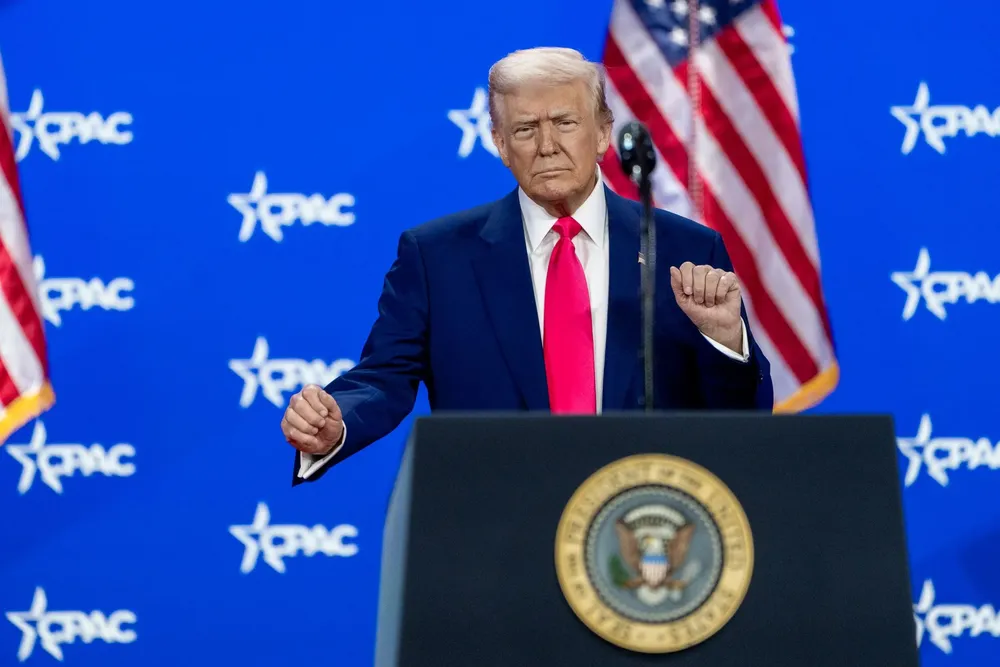BNEF slashes US offshore wind forecast 56% on Trump risk
Bloomberg’s clean energy research consultancy sees 17GW by 2035, and even that depends on a friendlier future administration

BloombergNEF slashed its 2035 US offshore wind forecast by 56% off its pre-election estimates on Trump uncertainty while conceding even that amount will require a friendlier administration post-2029, the consultancy said in a new report.
Our forecast “reflects an optimistic scenario, assuming the next administration takes a markedly more supportive stance on offshore wind,” BNEF wrote in its 1H 2025 research report released this morning.
The consultancy now sees 17GW of cumulative capacity by 2035, but warned if policy headwinds persist, “buildout could remain stalled well beyond 2029.”
The consultancy has cut its biannual forecast for the US sector every year since 2023 as inflationary headwinds and the Covid pandemic buffeted the sector, spiking interest rates and sending supply chains into chaos.
President Donald Trump’s election was the biggest hit, though, and Trump uncertainty “will stymy new supplier agreements, financing deals, and offtake contracts for the next four years,” BNEF predicted.
True to his word, Trump launched his war against wind power on his first day in office with a memorandum banning new leasing and permitting and putting existing projects under scrutiny with the goal of “terminating or amending” them.
The impact has been an almost complete shutdown of industry development beyond the five projects already in construction, which the consultancy believes will continue to move forward despite regulatory and litigation risk.
BNEF “expects all but the most advanced projects to pause development activities,” it said, adding it “anticipates little additional offshore wind activity from states or developers in the next four years.”
“While it is too early to assume the project will be canceled, BNEF expects that its commissioning will be delayed to 2029,” it said.
“The legal basis for the stop-work order is unclear, but if it holds up in court the project could face severe delays or even cancellation,” it added.
Tax credits and tariffs
While Trump’s direct actions have been damaging, his threats against tax credits in Biden's landmark Inflation Reduction Act (IRA) would also send costs skyward.
A loss of IRA funding “would be devastating for US projects due to offshore wind’s heavy reliance on tax credits," BNEF said.
The consultancy sees standard 30% investment tax credits lowering offshore wind's levelized cost of electricity 24% compared to an unsubsidized project.
Tariffs will also spiral costs for the already thinly margined industry due to its high import dependency.
Trump levied 20% import tariffs on the EU before suspending them as trade negotiations continue. Additionally, steel, which makes up some two-thirds of an offshore wind turbine, would be subject to a 25% tariff.
Copenhagen Infrastructure Partners-Iberdrola’s Vineyard Wind 1 and Orsted’s Revolution are also the only projects to have largely imported their components already, while others’ turbine components “likely have not crossed the border into the US yet,” it added.
Dominion Energy’s Coastal Virginia Offshore Wind has made huge progress in monopiles and subsea cabling but has yet to start installing turbines, while Orsted’s Sunrise Wind and Equinor’s Empire are in early stages and “will be hit hard”.
Supply chain
Even before Trump, the sector's stumbles eroded confidence, and despite $30bn in sector investment a domestic supply chain has barely emerged, with multiple highly publicized projects disappearing.
Vestas' nacelle assembly plant in the New Jersey Wind Port never emerged as the state's sector fell apart, while GE Vernova's shift away from an 18MW platform wiped 4GW off New York's pipeline and collapsed any manufacturing prospects.
EEW's Paulsboro, New Jersey plant successfully finished manufacturing monopiles for Orsted's Ocean Wind 1, only to scrap them when the project was cancelled.
After the first tranche of projects finishes construction towards decade's end, BNEF expects development to “drop off steeply from 2029-2033, as developers and states pursue a wait-and-see approach under Trump and are slow to bring projects online.”
The consultancy said it expects projects with offtake to “resume development in 2029 once Trump’s term ends, with the first coming online in 2031, “around the same time that states could restart their offtake auction programs.
BNEF expects to recover consistent growth starting in the early 2030s through 2040.
(Copyright)